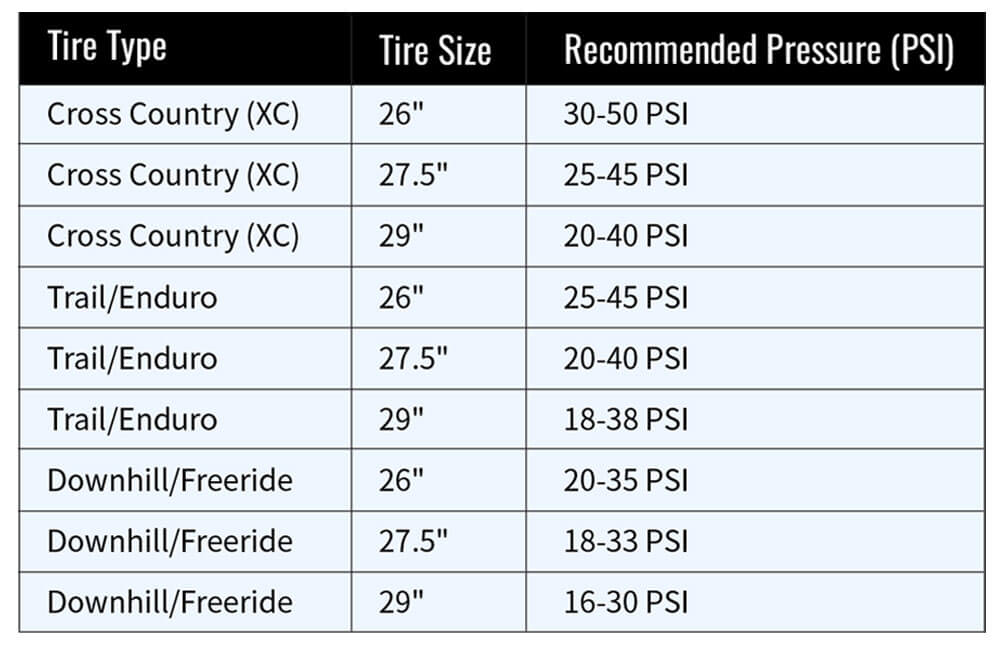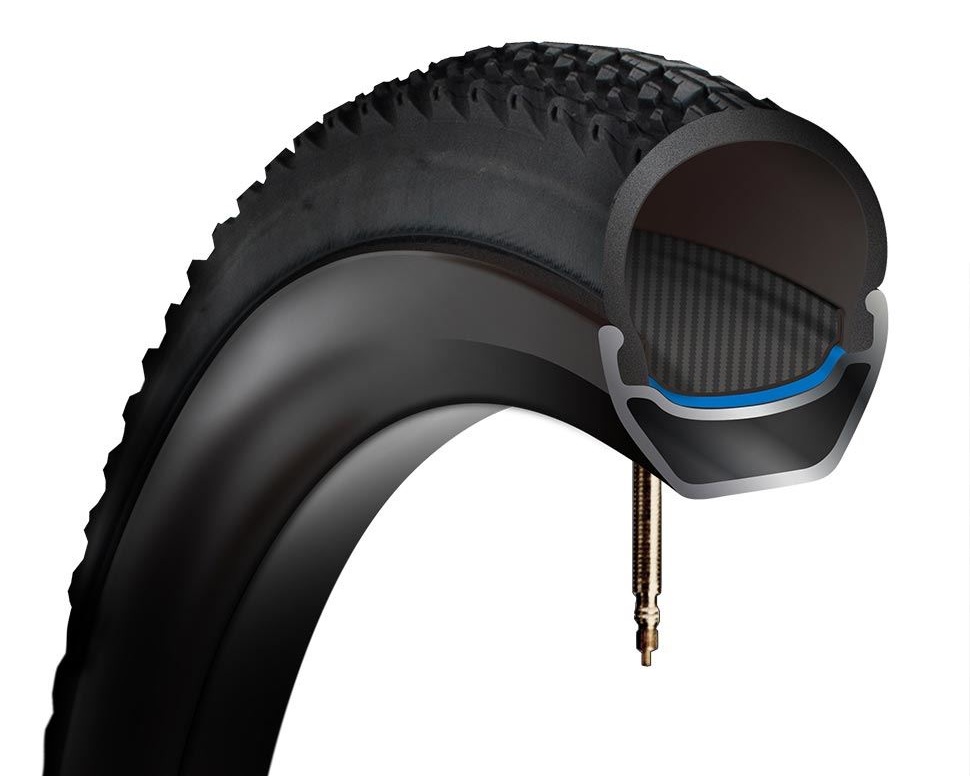Why Tubeless Tires Need Special Attention
Tubeless tires have revolutionized the mountain biking experience, offering improved traction, reduced weight, and increased puncture resistance. These benefits, however, come with unique pressure requirements that demand attention. Unlike traditional tires, tubeless tires rely on the rim and tire bead to create an airtight seal, which affects the way pressure is distributed within the tire. This means that mountain bike tubeless tire pressure must be carefully managed to ensure optimal performance and safety. By understanding the specific needs of tubeless tires, riders can unlock their full potential and enjoy a smoother, more confident ride. Properly inflated tubeless tires can improve cornering stability, reduce the risk of pinch flats, and enhance overall bike handling. In contrast, incorrect pressure can lead to reduced traction, increased rolling resistance, and a higher risk of tire damage.
Understanding the Ideal Pressure Range for Your Mountain Bike
When it comes to optimizing mountain bike tubeless tire pressure, understanding the ideal pressure range is crucial. Several factors influence the optimal pressure, including rider weight, terrain, and bike design. Rider weight, for instance, affects the pressure required to maintain optimal traction and prevent tire damage. Heavier riders may need higher pressures to compensate for their weight, while lighter riders may be able to get away with lower pressures. Terrain also plays a significant role, as rougher trails may require lower pressures to improve traction, while smoother trails may allow for higher pressures to reduce rolling resistance. Bike design, including the type of suspension and frame material, can also impact the ideal pressure range. Finding the “sweet spot” for pressure, where the tire is neither too soft nor too hard, is essential for maximizing performance and safety. By considering these factors, riders can determine the ideal pressure range for their mountain bike and enjoy a more efficient, confident ride.
How to Choose the Right Pressure for Your Riding Style
Determining the ideal mountain bike tubeless tire pressure requires consideration of riding style, as different disciplines demand unique pressure settings. Cross-country riders, for instance, typically opt for higher pressures (around 25-30 PSI) to minimize rolling resistance and maximize speed. Trail riders, on the other hand, may prefer lower pressures (around 20-25 PSI) to improve traction and cornering stability. Enduro and downhill riders often require even lower pressures (around 15-20 PSI) to absorb heavy impacts and maintain control at high speeds. Understanding the specific demands of each riding style is crucial for selecting the optimal pressure range. By doing so, riders can unlock their mountain bike’s full potential, improve performance, and reduce the risk of tire damage or accidents. Remember, the key to optimal performance lies in finding the perfect balance between traction, rolling resistance, and tire durability – and that begins with choosing the right pressure for your riding style.
The Role of Tire Volume and Width in Pressure Selection
When it comes to optimizing mountain bike tubeless tire pressure, tire volume and width play a crucial role. Wider tires, for instance, typically require lower pressures to maintain optimal traction and comfort. This is because wider tires have a larger contact patch, which allows for better grip and stability at lower pressures. Conversely, narrower tires may require higher pressures to prevent excessive flex and maintain speed. Tire volume also impacts pressure requirements, as larger volume tires may need lower pressures to prevent over-inflation and maintain a comfortable ride. Understanding the relationship between tire volume, width, and pressure is essential for selecting the ideal mountain bike tubeless tire pressure. By considering these factors, riders can fine-tune their tire pressure to suit their specific needs and riding style, ultimately improving performance and reducing the risk of tire damage or accidents.
Measuring and Adjusting Pressure: Tools and Techniques
Accurately measuring and adjusting mountain bike tubeless tire pressure is crucial for optimal performance and safety. There are several methods for measuring tire pressure, including digital gauges and traditional pumps. Digital gauges offer precise readings and are often more convenient than traditional pumps. When using a traditional pump, it’s essential to ensure the pump is calibrated and accurate to avoid incorrect readings. To accurately adjust pressure, riders should always check the pressure when the tires are cold, as riding can heat up the tires and affect pressure readings. It’s also important to avoid over- or under-inflating, as this can lead to reduced traction, increased risk of punctures, and decreased overall performance. By using the right tools and techniques, riders can ensure their mountain bike tubeless tire pressure is optimized for their specific needs and riding style, ultimately improving performance and reducing the risk of accidents.
Real-World Examples: Pressure Settings for Popular Mountain Bike Tires
When it comes to setting mountain bike tubeless tire pressure, it’s essential to consider the specific tire model and its intended use. Here are some real-world examples of pressure settings for popular mountain bike tires: The Maxxis Minion, a popular choice for enduro and downhill riding, typically requires a pressure range of 25-30 PSI (pounds per square inch) for optimal performance. The Schwalbe Nobby Nic, a favorite among cross-country and trail riders, often benefits from a pressure range of 20-25 PSI. It’s crucial to consult the manufacturer’s guidelines for specific pressure recommendations, as these can vary depending on the tire’s design and intended use. Additionally, riders should consider their own weight, riding style, and terrain when fine-tuning their mountain bike tubeless tire pressure. By referencing real-world examples and consulting manufacturer guidelines, riders can ensure they’re getting the most out of their tires and optimizing their mountain bike’s performance.
Common Mistakes to Avoid When Setting Tubeless Tire Pressure
When it comes to setting mountain bike tubeless tire pressure, there are several common mistakes that riders should avoid. One of the most critical errors is over- or under-inflating the tires. Over-inflation can lead to reduced traction, increased risk of punctures, and decreased overall performance. On the other hand, under-inflation can cause the tire to burp or lose air, leading to a loss of control and increased risk of accidents. Another common mistake is neglecting to check pressure regularly. Mountain bike tubeless tire pressure can fluctuate due to changes in temperature, humidity, and other environmental factors, so it’s essential to check pressure before each ride. Additionally, riders should avoid using the wrong pressure gauge or pump, as this can lead to inaccurate readings and poor performance. By being aware of these common mistakes and taking steps to avoid them, riders can ensure their mountain bike tubeless tire pressure is optimized for optimal performance and safety.
Maximizing Performance and Safety with Regular Pressure Checks
Regular pressure checks are crucial to maximizing the performance and safety of a mountain bike equipped with tubeless tires. By maintaining the optimal mountain bike tubeless tire pressure, riders can ensure their tires are functioning at their best, providing improved traction, handling, and overall performance. Regular pressure checks also help prevent tire damage, such as excessive wear, cracks, and punctures, which can lead to costly repairs or even accidents. Furthermore, proper pressure maintenance can reduce the risk of accidents caused by tire failure or loss of control. It’s recommended to check mountain bike tubeless tire pressure at least once a week, and before long rides or races. By making regular pressure checks a habit, riders can enjoy a safer, more enjoyable, and more performance-driven mountain biking experience.







